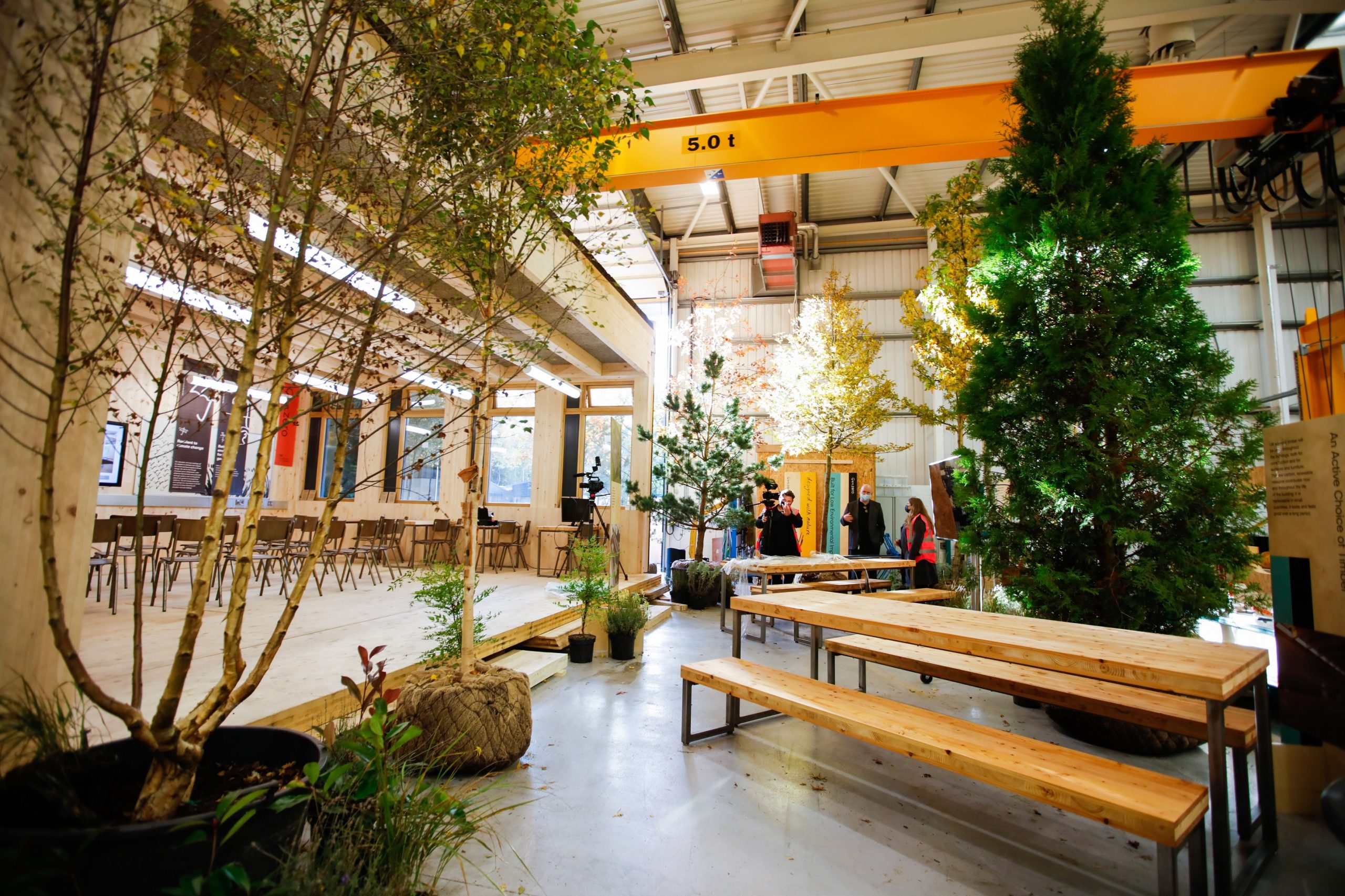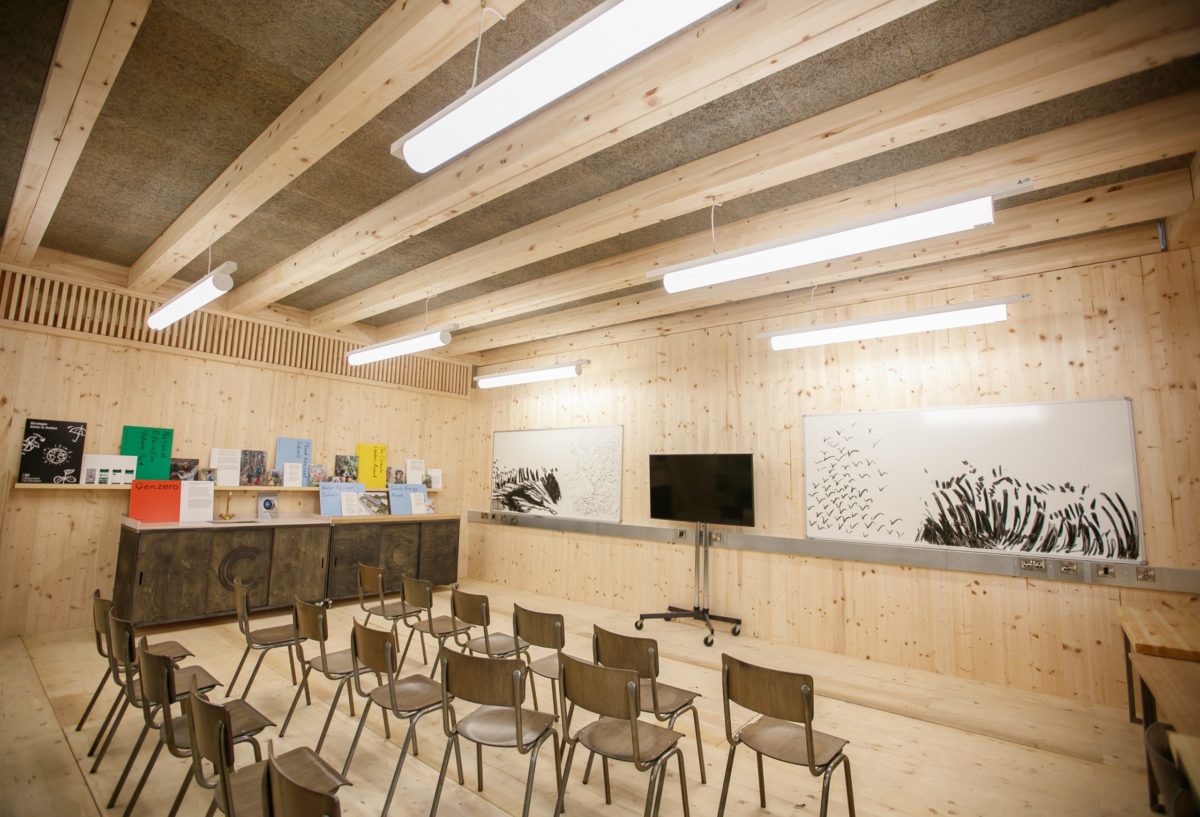
UK schools reportedly rack up a total energy bill of around £543 million each year, responsible for almost half of local authorities’ carbon emissions. With net zero targets approaching, there are a number of energy-saving initiatives that could help to reduce the carbon footprint of education; however, a fundamental shift in the way new schools are built is also on the agenda.
The £4 million GenZero project is exploring a new approach to building schools for generations to come, by using an ultra-low embodied carbon timber design and offsite manufacturing to help achieve net zero. The Innovate UK-funded Department for Education initiative will create a new design standard for school buildings with efficient manufacturing processes enabling faster construction, among other anticipated benefits.
Homegrown engineered timber is at the heart of the design – for the structure, fittings, and finishes – selected for its properties as a renewable, long-lasting natural material and its carbon-sequestering abilities.
A key stage of the research was the production of a prototype classroom which was first displayed at Construction Scotland Innovation Centre’s (CSIC) Innovation Factory as part of its BE@COP26 showcase last November. ECOSystems Technologies, a Scottish company driving innovation in timber construction, manufactured the unit using the UK’s only vacuum press at CSIC’s facility.
The demonstrator classroom was used to bring the research project to life and has allowed ECOSystems to trial the manufacturing and construction process from start to finish, reporting on the key findings and lessons learned throughout.

Matt Stevenson, founder of ECOSystems Technologies, said, “Our ambition is to support the development of homegrown timber concepts and prototypes that demonstrate the viability of the material for mass-scale construction projects – in this case, schools. Research and development is critical to reaching net zero and, with EcoSystems acting as the glue between research and industry, we can take ideas one step closer to becoming reality.
“Having a physical prototype is a huge benefit for a project like this, and the fact that it is designed to be a modular kit-of-parts means the unit can be built, taken apart and transported to various locations across the country. In fact, as part of the manufacturing process, we transported some of the panels from our Invergordon factory down to Glasgow which was a great initial test of how they performed on long journeys.
“Being able to experience the design in real life allows stakeholders to get an appreciation for the look and feel of the classrooms, with the critical research on embodied carbon and energy savings to back that up on paper. We look forward to seeing the GenZero project progress with the design concept hopefully rolled out widely in the near future, as part of a much wider move towards the greater use of homegrown mass timber.”
Also supporting the project across every element of the design, from funding to landscaping to furniture are: Innovate UK, Construction Innovation Hub (CIH), Active Building Centre (ABC), Lyall Bills Young, Cundall, Bond Bryan Digital, Mott Macdonald, Smith and Wallwork Engineers, Ares Landscape Architects, Manufacturing Technology Centre, Chalk Creatives and Garners Food Service Equipment.
The classroom design is based on a standardised grid system that allows schools to create rooms of different shapes and sizes depending on their needs, using the same kit-of-parts. As was the case with the prototype, the majority of the proposed school buildings would be manufactured offsite.
Eight tonnes of glue-laminated and cross-laminated Scottish homegrown timber was produced for the structural elements of the classroom such as wall panels, beams and columns. Researchers estimate that this volume of timber would require 27 trees, which would be harvested from an area equivalent in size to 10% of a football pitch.
In total, 10 tonnes of timber was used to produce the GenZero prototype, storing an estimated 16 tonnes of carbon dioxide equivalent (CO2e). The embodied carbon from producing the various material involved, and the construction process, is estimated at nine tonnes of CO2e.
Based on normal use, the building design has a lifespan of around 60 years, with the project team suggesting that the required level of timber could be regrown within that time.
Sam Hart, innovation manager at CSIC, said, “Research has proven that with the right preparation and processing, homegrown timber can be used for a range of higher-value construction purposes, which means reduced reliance on imports and increased carbon storage within our built assets. The environmental footprint of public buildings, such as schools, universities and colleges is vast, and this project forms part of a UK-wide drive to achieve net zero in the built environment. CSIC is currently home to the UK’s only commercial-scale vacuum press, which places us at the centre of the growing demand for homegrown engineered timber. GenZero represents another successful and exciting project that showcases its possibilities.”







